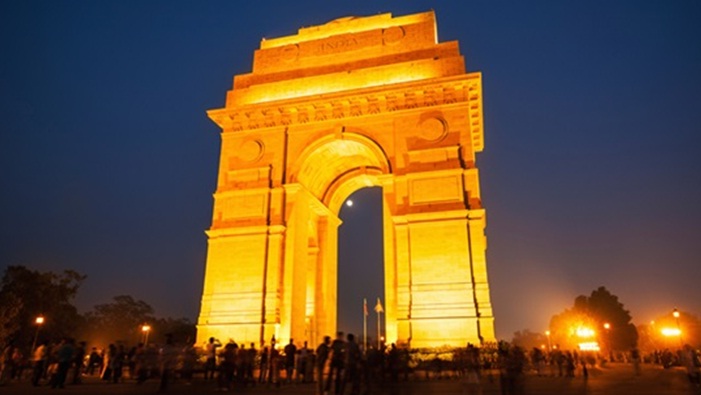VANTAGE POINT
News . Views . Reviews

Good habits can lower insurance premiums
Aug 02, 2018
The IRDAI working group set up in December 2017 to examine innovations in insurance involving wearable and portable devices has published its recommendations. These recommendations will help the insurers assess risks better and can lead to reduced insurance premium for customers at the time of renewals.
Wearable devices can lower health insurance premium
The insurers will be able to discount the health insurance renewal premiums by 10% to 15% depending on the policyholders’ health and activity data. The product pricing and premium review could be based on the inputs received from the health data captured through the devices.
Tracking the policyholders’ health data will not only help promote a healthy lifestyle but also play an important role in underwriting exercise in both, life and health insurance.
Critical role in risk assessment
The report says, “The usage of wearables data in health insurance will have a critical role in risk assessment and improvement. Currently, insurers merely have access to a point-in-time data through medical tests or self-disclosures, which are often not adequate for risk assessment on an ongoing basis.”
The report also recommends that the insurers be allowed to provide incentives to customers either as discounts on premiums or any additional benefit that is clearly defined, and the specifics of such benefits are filed with the regulator as part of the product filing procedure.
Depending on its viability, the insurers can add the wearable data pricing option in the existing products as well. This should, however, not result in higher premiums or changes in terms and conditions that are in force currently and should be done with the consent of the insureds.
Telematics to track drivers on the road
The report has also recommended installation of smart telematic devices to track the driving habits of policyholders. This can lead to substantial adjustments in motor insurance premiums and promote safe driving culture on Indian roads. India has the dubious distinction of globally leading in fatalities caused by road crashes. 150,000 people die on Indian roads annually due to road crashes.
The introduction of telematics can also provide additional benefits by way of fuel conservation as drivers become more responsible.
The report says, “Motor Insurance in India is being priced based on parameters like the make and model of the vehicle, its capacity and the geographical use. There can be several other aspects to the use of a vehicle. Consideration of these factors (in underwriting) will lead to a more meaningful risk assessment and provide for a more accurate mechanism for pricing.”
Value added services
The working group’s recommendations also speak about value added services (VAS) as a by-product. It says that insurers should be allowed to provide VAS using IoT as a by-product and to recover the cost of the device in the product pricing by explicitly mentioning it in the policy document. This would also encourage preventive maintenance of their assets like cars, safe driving habits, and a healthy life style.
This would also enable home insurance policies to provide services for problems such as minor repairs for water supply, electrical work, gas supply line work, small workmanship required for furniture.
Data privacy would be supreme
The report, however, says that the consent of the customer to share his/her data is a must for participation in such products. The consent should be for specific data and the specific purpose for which it is being obtained. In all instances, the security and confidentiality of customer data shall be protected at all costs.
Regulatory framework for InsurTechs in India
Besides giving recommendations regarding the regulatory approach towards InsurTech in India and data related aspects, the report has listed recommendations on evolving a regulatory framework for InsurTech and challenges in supervision.
Source: Asia Insurance Review

Regulator postpones decision on reinsurance order of preference
Aug 01, 2018
Foreign reinsurers which have a branch licence in India will have to wait longer to get clarity on the right to first preference in reinsurance treaties in India.
The IRDAI, in its board meeting at the end of June, was unable to arrive at a consensus on the matter and is seeking more time for the decision, reports Moneycontrol.
"There have been diverse views on this matter. Hence, any tweaks in the status quo will take time," said a senior official.
Meanwhile, foreign reinsurers have stuck to their demand for equal treatment with their Indian counterpart and are open to knocking government doors to seek a quicker solution. Currently, state-owned reinsurer GIC Re has first right in any reinsurance treaty. Foreign reinsurers have waited for more than 18 months for a clarification from the authorities of the order of preference.
In April 2018, IRDAI asked insurance companies to strictly adhere to the order of preference while ceding reinsurance business. Currently, first preference is given to an Indian reinsurer having a prescribed credit rating, followed by branches of foreign reinsurers.
In November 2017, a reinsurance expert committee constituted by IRDAI had recommended that the order of preference in reinsurance cessions should be: GIC Re and then to other Indian reinsurers, cross-border reinsurers, foreign reinsurance branches, Lloyd’s India and Indian insurers.
Source: Asia Insurance Review

Motor losses expected to soar
Aug 01, 2018
Motor insurance losses for general insurance companies may exceed 230% in the current fiscal year ending 31 March 2019 (FY2019), a sharp rise from the level of around 140% at present.
The higher losses are because the increase in motor third party premiums was not as much as the industry had expected, reports Forbes India. Motor third-party liability insurance premiums are set by the regulator, IRDAI.
In addition to this, the Ministry of Road Transport and Highways has now made it mandatory for insurance companies to pay out a minimum of INR500,000 ($7,400) to road accident victims claiming on third party insurance. This move was made because of the increasing cost of living. This is a 10-fold increase from the earlier proposed compensation amount of INR50,000.
"Motor premiums only went up by 10-15% this year on an average as against a demand of 30-40%. We are facing high claim ratios in third party motor and the situation is set to worsen after the INR500,000 mandatory third party claim," said the head of claims at a mid-size private life insurance company.
The government has said that insurance claims on and from 1 January 2019 will see an annual increase of 5%. Furthermore, there is no cap on the maximum insurance compensation that can be sought by the kin of a victim of a road accident. Insurers have sought a cap on the compensation to be paid out in case of death.
Source: Asia Insurance Review

Health insurance a challenge
July 31, 2018
Health insurance in India, while a growing segment, has yet to take off fully, and several measures are needed to improve and expand insurance coverage, according to the National Health Profile 2018 released last month.
Around 437 million individuals, or 34% of the total population, had one or the other form of health insurance cover at 31 March 2017, underlining the fact that the number of Indians spending ‘out of pocket’ on healthcare remains significantly high. Among those insured, 79% are covered by state owned insurance companies in the country. Overall, 80% of all persons covered with insurance fall under government-sponsored schemes.
The cost of medical treatment has been increasing in India and it has led to inequity in access to healthcare services, according to the report. Per capita public expenditure on health in nominal terms has gone up from INR621 ($9) in the year ended 31 March 2010 (FY2010) to INR1,112 in FY2016, stated the report. It noted that the centre-state share in total public expenditure on healthcare was 31:69 in FY2016.
The central government plans to increase medical insurance coverage through the National Health Protection Scheme (NHPS), also called Ayushaman Bharat, that aims to provide over 100 million poor families an annual health cover of INR500,000 per family. The scheme is scheduled to be launched next month..
Challenge
The key challenge with Ayushaman Bharat is in its implementation. Each state must sign a MoU with the central government and share the costs in a 40:60 ratio. However, many states have existing health insurance schemes and some of these are reluctant to merge theirs with Ayushman Bharat. There are also issues with insurance premium, models of implementation etc, reports DNA.
In a note, brokerage Edelweiss said that charges for the procedures listed in Ayushman Bharat are "extremely low and we believe corporate hospitals like Apollo and Max are likely to refrain from empanelment with this scheme". It listed out package rates for Caesarean delivery, total knee and hip replacement, coronary artery bypass and cataract surgery under the government scheme to show industry average rates are significantly higher than what the government proposes to offer. The government has earmarked INR100 billion to spend on Ayushman Bharat in the first year.
Source: Asia Insurance Review

National health insurance plan will be implemented 'at the right price'
July 31, 2018
The right pricing for the National Health Protection Scheme (NHPS), or Modicare, will be an annual premium per family of around INR2,500 ($36.40), an amount which will differ from state to state, according to Mr G Srinivasan, chairman and managing director of state-owned The New India Assurance.
This estimate is more than double the INR1,000-1,200 per annum which government sources have initially hoped insurers would charge for the healthcare insurance scheme which is targeted at 100m low-income households.
Mr Srinivasan said, “Every insurer will quote a viable price because it is a big scheme; and if they don’t quote a viable price, it will hurt them.” He added that insurers would therefore be doing business at the right price, according to a report in the Financial Express.
“Even the government has decided that it will give the right price, which will be decided by the tender mechanism. State governments will float the tender and 10-12 insurance companies will be enrolled by the Centre based on criteria like experience and size, among other things.
“These companies have to quote a price and whoever quotes the lowest price will win the tender and run the scheme. Premium rates will differ from state to state. We cannot have a uniform price across the country, but on an average, the annual premium per family can be around INR2,500. We are looking at around INR200bn as new business from this scheme for the industry.”
The NHPS, which is likely to be launched on 15 August, will provide INR500,000 in annual medical coverage for secondary and tertiary healthcare for a family of five. Previously, sources have said that the scheme is likely to have an annual premium of less than INR1,100 for each eligible household, with the central and state governments saying it should be closer to INR1,050 for every family.
Source: Asia Insurance Review
[1] « 24 | 25 | 26 | 27 | 28 » [62]




